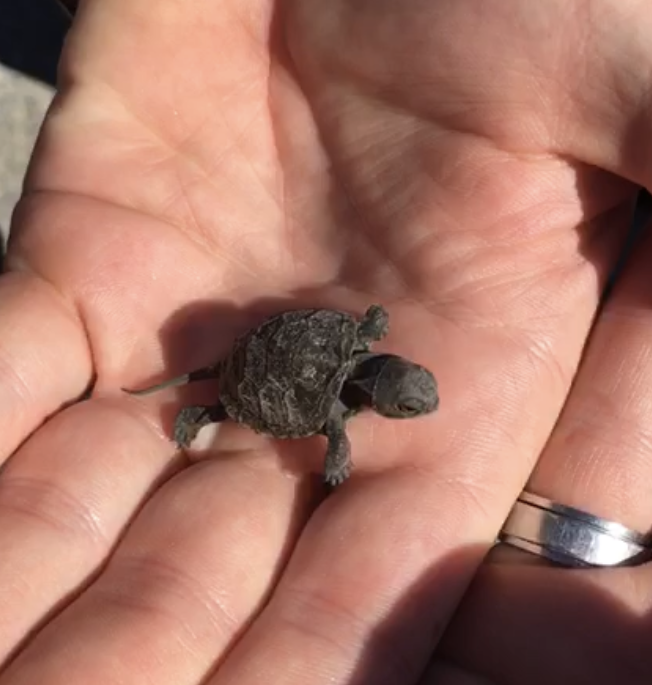The turtle project just next door to the metropolitan city of Vienna
A year ago I donated to a project protecting European pond turtles here around Vienna. Yesterday we were given a very informative tour of the project and also how „our“ designated clutch of eggs had done and how many of those eggs had hatched. They usually put a metal grid over the clutch of eggs right after the turtle lays the eggs to protect it from foxes and other animals, which is necessary as due to the reduction of their habitat, the turtles all lay their eggs in the same area and once a fox or other animal finds one clutch, it will find all the other ones as well. Due to recent dam repairs and construction work in the area where the turtles hatch, some of the eggs were taken out of their nests and put into incubators. Three of them had hatched yesterday so we were able to release the tiny turtles into the water. Interesting European pond turtle-facts:

![]() They cannot swallow unless under water. The turtles hatching in late summer usually stay underneath the ground until April/May which also means they don’t eat for a few months.
They cannot swallow unless under water. The turtles hatching in late summer usually stay underneath the ground until April/May which also means they don’t eat for a few months.
![]() The European pond turtle eats insects, snails, frogs etc it hunts in the water. So it eats meat and not salad or grass
The European pond turtle eats insects, snails, frogs etc it hunts in the water. So it eats meat and not salad or grass
![]() Male and female turtles can be differentiated by their eye colour.
Male and female turtles can be differentiated by their eye colour.
![]() Their shell grows with them so until they are fully grown, you can tell their age by the amount of rings on the shell like you can with trees.
Their shell grows with them so until they are fully grown, you can tell their age by the amount of rings on the shell like you can with trees.
![]() The European pond turtle can take in water through their butts, which they release when digging the hole for the eggs. It helps make the soil easier to dig. However, if people disturb the turtles laying eggs and pick them up, the turtle loses that water before even starting to dig so it can’t lay its eggs.
The European pond turtle can take in water through their butts, which they release when digging the hole for the eggs. It helps make the soil easier to dig. However, if people disturb the turtles laying eggs and pick them up, the turtle loses that water before even starting to dig so it can’t lay its eggs.

Leave a Comment